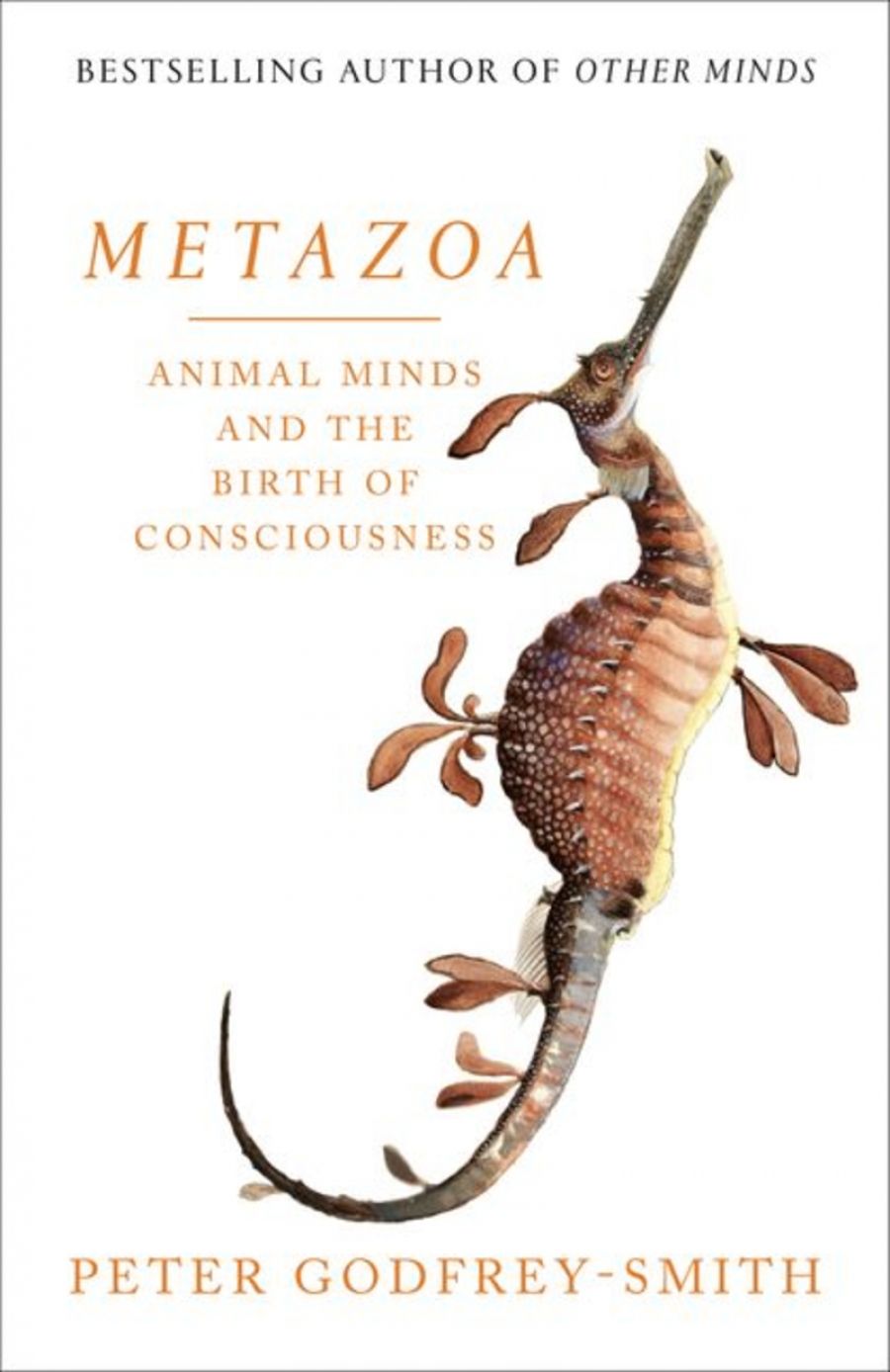
- Free Article: No
- Contents Category: Science and Technology
- Review Article: Yes
- Article Title: Gradual evolution
- Article Subtitle: Investigating the origins of consciousness
- Online Only: No
- Custom Highlight Text:
One of the blessings of Covid-19 lockdown was discovering the wildlife cameras streaming on the internet in real time. With a click it became possible to observe brown bears catching salmon in Alaska, sea lions clambering on and off a rocky beach in British Columbia, and white-bellied sea eagles nesting in an eyrie high in bushland on Sydney’s fringes. Watching newly fledged eaglets literally stretching their wings as they stare across the treetops, it’s impossible not to wonder what they must experience in that moment, as they sense for the first time the instinctive urge to take flight. What does it feel like to be a bird? What sense does a bird have of itself as a subjective, experiencing being? How might its consciousness be characterised?
- Grid Image (300px * 250px):

- Book 1 Title: Metazoa
- Book 1 Subtitle: Animal minds and the birth of consciousness
- Book 1 Biblio: William Collins, $32.99 pb, 346 pp
- Book 1 Readings Link: booktopia.kh4ffx.net/46reo
Using his observations of animals such as shrimps, crabs, and cuttlefish as a starting point, Godfrey-Smith draws together biological research and philosophical reflections to compellingly, and lucidly, argue that the evolution of mind – of an integrated sense of self – is inextricably bound up in our physical evolution. Our minds are not an effect of our biology, they are our biology, ‘the first-person point of view of a complex living system of a certain kind, not something conjured up by the workings of that system’.
According to Godfrey-Smith, the roots of this particular biology of mind are to be found in an animal’s capacity to sense its environment and, consequently, to act on that environment. As he did in Other Minds, Godfrey-Smith begins his enquiry into consciousness with the advent of the first cell. The cell’s ability to create a sense of order within a maelstrom of chemical ‘collisions, attractions and repulsions’ was critical to the generation of complex life, as was the cell membrane’s capacity to control the flow of information, energy, and, crucially, the electrically charged atoms and molecules (ions) circulating in its environment. Even an entity as primitive as the earliest single-celled organisms had the basic ‘machinery of sensing … of [electrical] excitability’, the organism’s self-maintenance reliant on its sensitivity to its surroundings.
While Godfrey-Smith is not making an argument for the sentience of cells, he is emphasising that there existed within these earliest entities the properties of sensation and action, or agency, that were fundamental to the evolution of consciousness. In multicellular organisms (metazoa), these properties evolved into more coordinated actions such as reaching, clenching, and stinging (an octocoral extending its tentacles in order to catch plankton; a jellyfish releasing its harpoon-like stingers in order to protect itself), and, eventually, through the augmentation of sensations such as sight and touch, the capacity to manipulate the environment, thereby giving rise to a ‘new way of being in the world … [and] a sense of self versus other’.
Central to the evolution of consciousness was the ability of cells to communicate with each other, a function that would evolve into nervous systems and the sophisticated neural networks that constitute brains. Here, Godfrey-Smith examines the relationship between the electrical fields generated by neural activity, their inherent rhythms and oscillations, and the actuation of consciousness. He notes that ‘some [neural] cells breathe together in a rhythm … [and] each cell can electrically sense the chorus-breathing of the whole’. The ongoing hum aroused by this electrical patterning, and the deviations within that hum that are generated by specific sensations or actions, is the essence of our experience of self.
To a certain extent, we can only guess at what an octopus intends when it throws debris at another octopus; what a cleaner fish encounters when it views itself in a mirror; whether a bee is truly feeling pessimistic after it has been shaken. Godfrey-Smith acknowledges that what we perceive as an inner life within various animal species may be no more than an imaginative act influenced by our own sense of subjectivity. Even so, the evidence and insights assembled here offer a convincing account of consciousness, not as something that is suddenly switched on at some point in evolution but as a gradual coming into being, one wholly dependent on how unified and complex is the arrangement of matter and energy within our nervous systems.
If there is any criticism to be levelled at Metazoa, it is the degree of overlap between this book and Other Minds. But Godfrey-Smith excels at interpreting the shifting terrain of consciousness studies and outlining the implications for research ethics. He is also an engaging storyteller, able to interweave complex science and philosophy with vividly realised descriptions of the natural world: swimming above a whale shark is like ‘hovering over the surface of a planet’; being surrounded by a school of yellow kingfish is like being ‘inside a thrumming cloud of missiles’. He also incorporates some wonderful examples of research: the effects of massage on cleaner fish (it lowers their stress hormones); octopuses dosed with MDMA, or ecstasy (it makes them more gregarious); and fish learning to discriminate not merely between blues and classical music but also between particular blues artists.
Thinking again about those eaglets on the verge of flight, I have just as many questions as I did before I read Metazoa, but now they are more nuanced. Godfrey-Smith’s account of the evolution of consciousness has moved me a little further along the path towards discovering viable answers.


Comments powered by CComment